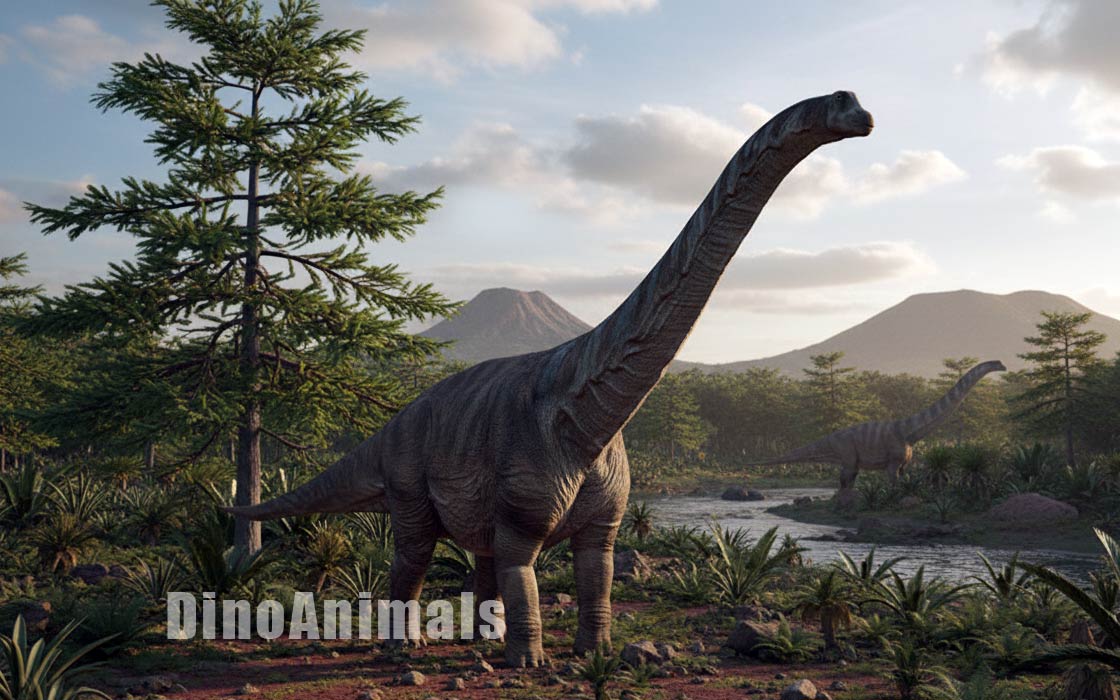Every month, 100,000 readers use the Dinosaur Database, but we receive no support from you. Developing and updating the database requires a lot of work. If you want it to remain open and be updated, please support us via the "Buy us a coffee" button available on every page or via the Support page.
Dinosaur: Abditosaurus kuehnei

| Length*: | 16.8 m | 55.1 ft |
| Weight*: | 10 t | 22,046 lb |
*The largest known specimen
Period
Epoch: Late Cretaceous
Stage: Early Maastrichtian
Years: 72.1–66 Ma
Details
Status: valid
Author: Vila et al.
Year: 2022
Distribution
Area: Europe
Country: Spain
Region: Catalonia
Formation: Conquès
Description
Abditosaurus kuehnei
Abditosaurus kuehnei was a large saltasaurine titanosaur that lived during the early Maastrichtian stage of the Late Cretaceous, approximately 70.5 million years ago. Its remains were discovered in the Tremp Basin of Catalonia, northeastern Spain, in the locality of Orcau-1. The genus name Abditosaurus (from Latin abditus, meaning “hidden”) refers to the fact that the fossil remained undescribed in collections for decades, while the species epithet kuehnei honors Professor Walter Georg Kühne, who discovered the specimen in 1954.
This dinosaur is remarkable for being the most complete titanosaur skeleton yet discovered in Europe and represents a rare instance of a large-bodied, Gondwanan-affiliated titanosaur reaching the European archipelago. Phylogenetically, it belongs to a clade of South American and African saltasaurines, suggesting a dispersal from Africa to Europe during a sea-level drop in the early Maastrichtian.
The holotype was found at Orcau-1 locality of the Conques Formation, approximately 6 km east of Tremp, in Pallars Jussà County, Catalonia, Spain.
Physical Characteristics
Abditosaurus kuehnei was a large-bodied sauropod, estimated to have reached a length of 17 meters (55.7 ft) and a body mass of approximately 10,000 kilograms (~22,000 lb). This makes it substantially larger than other contemporaneous European titanosaurs, many of which exhibited traits associated with insular dwarfism.
The known skeleton includes elements of the neck, back, limbs, and girdles, notably:
- 12 articulated cervical vertebrae and seven dorsal vertebrae
- Right scapula, coracoid, and partial sternal plate
- Partial humeri, radius, femur, tibia, fibula, and a calcaneum
Unique features (autapomorphies) include:
- Pneumatic features and laminae arrangements in dorsal vertebrae
- Distinctive morphology of dorsal ribs
- Posteriorly beveled distal end of the fibula
- Presence of ossified sternal ribs and a calcaneum—rare among titanosaurs
The bones indicate a senescent (very old) individual, lacking signs of the growth retardation seen in smaller island-dwelling relatives. These features help distinguish Abditosaurus from other European taxa, indicating it was not subject to insular dwarfism and likely retained the growth patterns of mainland forms.
Diet and Feeding Habits
Like all titanosaurs, Abditosaurus was herbivorous, likely feeding on conifers, ferns, and other low to mid-height vegetation. Its long neck and massive body suggest a high browsing range and capacity for processing large volumes of plant matter. The size and robustness of its limb bones point to a slow but steady gait, suitable for traversing vast landscapes in search of food.
Habitat and Distribution
Abditosaurus lived on the Ibero-Armorican island, part of the fragmented European archipelago of the Late Cretaceous. The fossil was recovered from the Tremp Group (Conques Formation), a terrestrial sedimentary unit rich in vertebrate fossils and associated with warm, semi-arid floodplain environments.
The surrounding ecosystem included:
- Crocodylomorphs and dromaeosaurids (identified by isolated teeth)
- Gastropods and plant remains
- Fusioolithus baghensis eggshells, a Gondwanan oospecies indicating the presence of titanosaur reproduction in the region
Behavior and Social Structure
Direct behavioral evidence is lacking, but based on comparative anatomy, Abditosaurus likely exhibited solitary or loosely social habits. Its advanced age and massive body suggest limited predation risk. As with other titanosaurs, it may have laid eggs in colonial nesting sites, as indicated by the presence of fusioolithid eggshells nearby.
Discovery and Research
The fossil was discovered in 1954 by Professor Walter Georg Kühne but remained unstudied for decades. It was later rediscovered and excavated by paleontologists from the Institut Català de Paleontologia and the Museu de la Conca Dellà. The specimen, housed in multiple institutions, was formally described in 2022 by Vila et al.
The holotype includes a semi-articulated skeleton within a 6 × 4 m area, preserved in a single stratigraphic horizon. The discovery has become a cornerstone for understanding Late Cretaceous faunal turnover in Europe.
Significance and Notable Facts
- Abditosaurus kuehnei is the most complete titanosaur ever found in Europe.
- Its size contrasts sharply with previously known European titanosaurs, which were generally small due to insular dwarfism.
- Estimated to be ~20% larger than Ampelosaurus and more than twice the size of Lirainosaurus and Lohuecotitan.
- It shares close evolutionary ties with African and South American titanosaurs, especially Paralititan and Maxakalisaurus.
- Its arrival likely reflects a dispersal from Africa, facilitated by a sea-level drop (KMa2 regressive event) around 70.6 Ma
- The fossil was hidden from science for nearly 60 years, hence its name.
- The species likely reached Europe via land bridges created during sea-level drops in the early Maastrichtian.
Conclusion
Abditosaurus kuehnei offers critical insight into Late Cretaceous dinosaur faunas of Europe and the biogeographic processes that shaped them. Its Gondwanan affinities, lack of insular dwarfism, and substantial body size indicate a faunal turnover driven by dispersal from Africa. This remarkable sauropod challenges traditional views of European dinosaurs as insular dwarfs and highlights the dynamic connectivity between continents during the final chapter of the Age of Dinosaurs.
Locations
Sources
Material: Partial skeleton (fragments of the ilium, parts of the scapula, dorsal vertebrae, chevrons, a tibia, parts of the femurs and a complete humerus alongside undetermined bones) without skull
References: Vila B, Sellés A, Moreno-Azanza M, Razzolini NL, Gil-Delgado A, Canudo JI, Galobart À (2022). "A titanosaurian sauropod with Gondwanan affinities in the latest Cretaceous of Europe".




